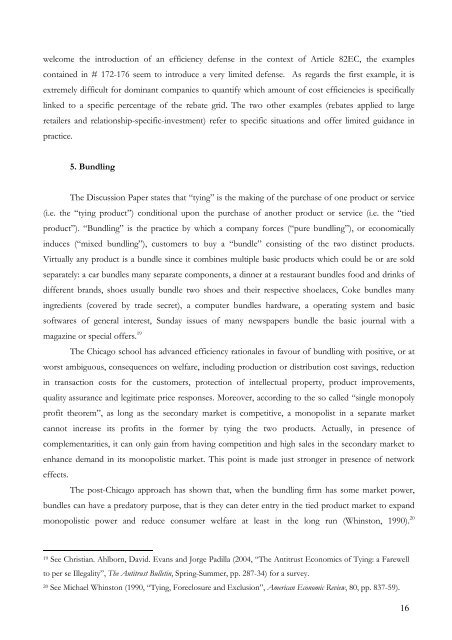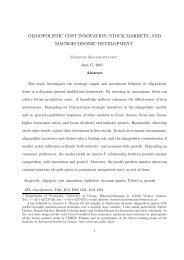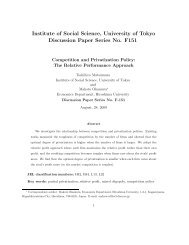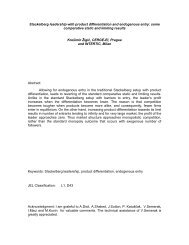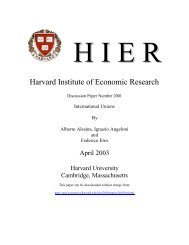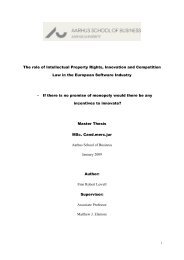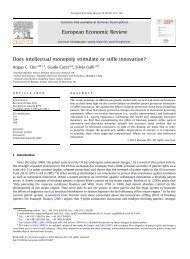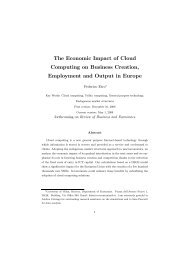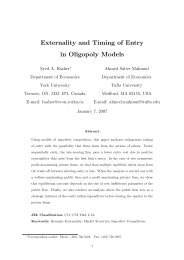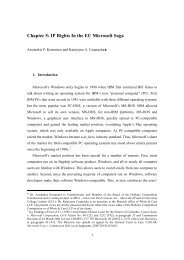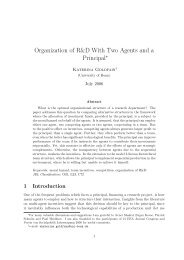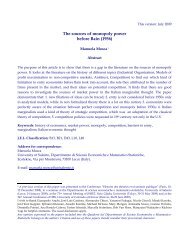The EU Approach to Abuse of Dominance - Intertic
The EU Approach to Abuse of Dominance - Intertic
The EU Approach to Abuse of Dominance - Intertic
Create successful ePaper yourself
Turn your PDF publications into a flip-book with our unique Google optimized e-Paper software.
welcome the introduction <strong>of</strong> an efficiency defense in the context <strong>of</strong> Article 82EC, the examples<br />
contained in # 172-176 seem <strong>to</strong> introduce a very limited defense. As regards the first example, it is<br />
extremely difficult for dominant companies <strong>to</strong> quantify which amount <strong>of</strong> cost efficiencies is specifically<br />
linked <strong>to</strong> a specific percentage <strong>of</strong> the rebate grid. <strong>The</strong> two other examples (rebates applied <strong>to</strong> large<br />
retailers and relationship-specific-investment) refer <strong>to</strong> specific situations and <strong>of</strong>fer limited guidance in<br />
practice.<br />
5. Bundling<br />
<strong>The</strong> Discussion Paper states that “tying” is the making <strong>of</strong> the purchase <strong>of</strong> one product or service<br />
(i.e. the “tying product”) conditional upon the purchase <strong>of</strong> another product or service (i.e. the “tied<br />
product”). “Bundling” is the practice by which a company forces (“pure bundling”), or economically<br />
induces (“mixed bundling”), cus<strong>to</strong>mers <strong>to</strong> buy a “bundle” consisting <strong>of</strong> the two distinct products.<br />
Virtually any product is a bundle since it combines multiple basic products which could be or are sold<br />
separately: a car bundles many separate components, a dinner at a restaurant bundles food and drinks <strong>of</strong><br />
different brands, shoes usually bundle two shoes and their respective shoelaces, Coke bundles many<br />
ingredients (covered by trade secret), a computer bundles hardware, a operating system and basic<br />
s<strong>of</strong>twares <strong>of</strong> general interest, Sunday issues <strong>of</strong> many newspapers bundle the basic journal with a<br />
magazine or special <strong>of</strong>fers. 19<br />
<strong>The</strong> Chicago school has advanced efficiency rationales in favour <strong>of</strong> bundling with positive, or at<br />
worst ambiguous, consequences on welfare, including production or distribution cost savings, reduction<br />
in transaction costs for the cus<strong>to</strong>mers, protection <strong>of</strong> intellectual property, product improvements,<br />
quality assurance and legitimate price responses. Moreover, according <strong>to</strong> the so called “single monopoly<br />
pr<strong>of</strong>it theorem”, as long as the secondary market is competitive, a monopolist in a separate market<br />
cannot increase its pr<strong>of</strong>its in the former by tying the two products. Actually, in presence <strong>of</strong><br />
complementarities, it can only gain from having competition and high sales in the secondary market <strong>to</strong><br />
enhance demand in its monopolistic market. This point is made just stronger in presence <strong>of</strong> network<br />
effects.<br />
<strong>The</strong> post-Chicago approach has shown that, when the bundling firm has some market power,<br />
bundles can have a preda<strong>to</strong>ry purpose, that is they can deter entry in the tied product market <strong>to</strong> expand<br />
monopolistic power and reduce consumer welfare at least in the long run (Whins<strong>to</strong>n, 1990). 20<br />
19 See Christian. Ahlborn, David. Evans and Jorge Padilla (2004, “<strong>The</strong> Antitrust Economics <strong>of</strong> Tying: a Farewell<br />
<strong>to</strong> per se Illegality”, <strong>The</strong> Antitrust Bulletin, Spring-Summer, pp. 287-34) for a survey.<br />
20 See Michael Whins<strong>to</strong>n (1990, “Tying, Foreclosure and Exclusion”, American Economic Review, 80, pp. 837-59).<br />
16


